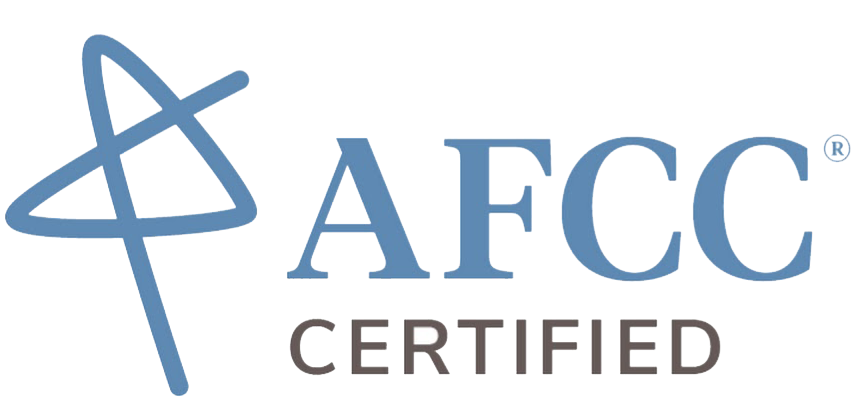
Understanding Debt: Warning Signs and Prevention
In today’s world, using credit is very common and is almost as expected as having a cell phone. But when does “using credit” turn into “having debt”? And how much debt is too much? Understanding how debt works and how to recognize when it’s becoming too much to handle is key. We’re going to help you spot debt warning signs so that you can steer clear of financial trouble.
If you are struggling with debt, the first thing to understand is that you are not the only one. Many people have been where you are now and have turned things around. Need some inspiration? See how other Albertans got out of debt. With help from your own dedicated credit counsellor, you’d be amazed at how quickly you can get back on track.
Let’s take a look at how you can avoid getting over your head in debt. We’ll talk about good and bad debt, teach you how to calculate your debt ratio and provide the tools and support you need.
Consequences of Too Much Debt
Carrying too much debt can have wide-ranging consequences. It can damage your credit score, making it harder to get loans or favourable interest rates in the future. The stress from managing high levels of debt can also take a toll on your mental and emotional well-being. Debt may lead to anxiety and trouble sleeping and can impact your relationships and productivity.
Also, too much debt increases the risk of bankruptcy. Bankruptcy is a serious financial situation that can have long-term effects on your ability to borrow money. Effective debt management can reduce these risks and lead to a better financial situation.
Understanding Debt and Credit
Many people find the concepts of debt and credit confusing, often using them interchangeably. However, understanding the distinction between the two is crucial for effective financial management.
What is Debt?
Simply put, debt is the money you owe. Whether from borrowing money to make a large purchase, like a car or a home, or using a credit card for daily expenses, debt is money you are legally bound to repay according to the agreed-upon terms. Managing debt wisely is crucial as it directly impacts your financial stability and future borrowing capabilities.
What is Credit?
Credit is money that one person or entity borrows from another, with a promise to pay it back, usually with interest, over an agreed-upon period of time. Credit allows you to make purchases or investments that you couldn’t otherwise afford. For example, taking out a loan to buy a house or pay for higher education are common reasons for using credit.
There are different types of credit, including:
- Loans
- Lines of credit
- Credit cards
When it comes to loans, they can be secured or unsecured:
- Secured Loans: These are loans where you promise something you own as a backup (called collateral) to the lender in case you can’t pay back the loan. For example, when you get a mortgage to buy a house, the house itself is the collateral. If you fail to pay the mortgage, the lender can take over the house to recover their money. This type of loan often has lower interest rates because it’s less risky for the lender.
- Unsecured Loans: These loans don’t require you to offer anything as collateral. A common example is a line of credit. Since nothing is backing the loan, these tend to have higher interest rates than secured loans. This is because the lender takes on more risk. If you don’t pay back the debt, they don’t have a direct way to recover their funds.
Good Debt vs. Bad Debt
Not all debt is equal. There is good debt, and there is bad debt. But what separates them? Let’s break it down in a way that’s easy to understand.
Good debt is like a wise investment in your future. Good debt helps you grow your wealth over time, increase your income, or move toward your goals in life. Examples include taking out a loan for education or getting a mortgage for a house. It’s debt that pays for itself or that’s expected to increase in value. In essence, good debt opens doors and creates opportunities.
On the flip side, bad debt is the kind that can drag you down. It’s often associated with buying things that won’t increase in value or that you can’t really afford. This includes things like high-interest payday loans or financing a new car that loses its value the moment you drive it off the lot. Bad debt can also be anything with terms that make it hard to pay back or that brings down your credit score.
Knowing the difference between good debt and bad debt can help you make smarter borrowing decisions. It can also help you prioritize your payments and manage your money wisely.
How Much Debt is Normal?
It can be tricky to figure out how much debt is considered “normal” since it varies based on age, income, and other factors. The Financial Consumer Agency of Canada (FCAC) recommends keeping your “good debt” at a level that you can repay without putting too much strain on your budget. The Government of Canada also suggests that your debt payments (including your mortgage) be less than 40% of your monthly income.
Debt-to-Income Ratio
Rather than worrying about how much debt is “normal”, determine how much debt you can handle. One tool the banking industry uses to do this is the ‘debt-to-income ratio.’
The debt-to-income ratio is a simple way to measure your financial health. It compares the total debt you owe each month to your overall income. To calculate your debt-to-income ratio, add up your monthly debt payments and divide them by your gross monthly income. Your gross income is the money you earn before taxes and other deductions. This ratio is expressed as a percentage. A lower percentage means you have a healthy balance between debt and income. A low debt-to-income ratio often makes it easier to borrow money because there is less risk to lenders.
Find out what your debt-to-income ratio is using this handy online calculator or download this pdf to use: https://www.canada.ca/content/dam/fcac-acfc/migration/yft/credit-1-7-eng.pdf
Warning Signs of a Debt Problem
Recognizing early signs of a debt problem can help you change course. Here’s a brief look at common debt warning signs to watch for:
- Making Only Minimum Payments on Credit Cards: This means it will take you longer to pay off your credit card balance and you’ll pay more interest.
- Consistently Carrying a Balance on Credit Accounts: Indicates ongoing debt or spending that is more than your budget. This leads to higher interest costs.
- Borrowing to Pay Off Other Debts: Signals a risky cycle of debt where new loans cover old ones, often worsening the financial situation.
- Relying on Credit Cards for Unexpected Expenses: Shows a lack of emergency savings, making you dependent on credit for emergencies.
- Overspending Relative to Income: This means spending more than you earn, a direct path to debt.
- Being Denied for New Credit Applications: Lenders may see you as a high-risk borrower due to your debt.
- Hiding Spending or Debt from Loved Ones: Often reflects guilt or denial about one’s financial situation.
- Inability to Save Due to Debt Repayments: If your debt prevents you from saving, it may be too high.
These signs can help identify if you’re dealing with manageable debt or if you have too much debt.
Preventing a Debt Problem
Your attitude toward money and money habits can impact your finances and prevent debt problems. Credit, when used appropriately and paid off, can be a valuable financial tool. However, it is easy for too much credit or the wrong kinds of credit to lead to high levels of debt. Understanding the nature of your debt, recognizing the warning signs of debt issues, and taking preventive measures can help maintain financial health and avoid the pitfalls of excessive debt.
If you are already in debt and want to get back on track with your finances, work with an AFCC-certified Money Mentors credit counsellor to create a realistic budget. This process will show you where your money goes, highlighting areas to save or reduce debt. With the right support, you can live a debt-free life.

All credit counsellors at Money Mentors must have the Accredited Financial Counsellor Canada (AFCC) certification. This ensures financial practitioner expertise in the financial counselling industry while abiding by the Professional Code of Ethics and Standards.
If you find yourself struggling, remember that help is available and taking action sooner rather than later can make all the difference. If you think you have a debt problem, call Money Mentors today – it’s free for all Albertans!
Have questions?
Need more information or want to talk to an accredited financial counsellor for peace of mind? Let us help.
Call 1-888-294-0076 or book an appointment. It’s free for all Albertans.








